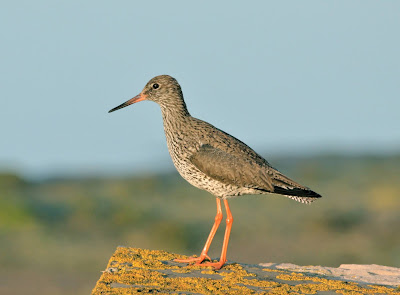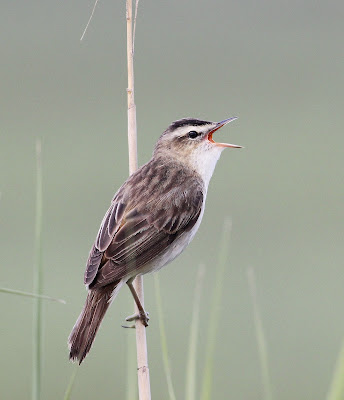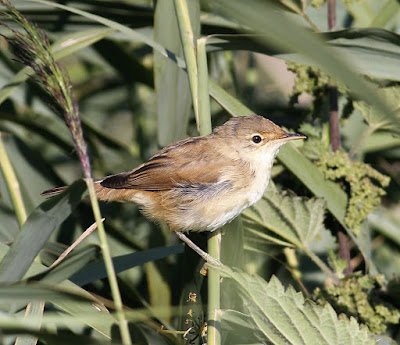Wednesday, June 16, 2021
A Touch Of Summer
Wednesday, June 9, 2021
Wader Worries
Sunday, June 6, 2021
A French Bonus
Thursday, June 3, 2021
Birdpedia
Tuesday, June 1, 2021
Monday Monday
Friday, May 28, 2021
Diary Dates
Tuesday, May 25, 2021
Britain's Insects - Book Review
Princeton Press sent me a new WildGuides for review on Another Bird Blog. A book I didn't request because apart from a passing summertime interest in dragonflies, damselflies & butterflies, my knowledge of insects and entomology is virtually zero.
Britain's Insects - A field guide to the insects of Great Britain and Ireland, is published on 8 June 2021. The Author is Paul D Brock, a name that will be entirely familiar to devoted entomologists and probably to birders with a secondary interest in lepidoptera and odonata.
Paul D. Brock is an entomologist and a scientific associate at the Natural History Museum, London. He is a renowned author of insect books and a widely published photographer. He is a world authority on stick-insects and leaf-insects, with a genus and several species named after him - Paul D Brock.
On the other hand, Princeton's mistake was an opportunity to discover more about a branch of wildlife I rarely explore while upholding the principle of “learn something new every day”. I opened the book cautiously in case a creepy crawly emerged from within. Nothing did, so I investigated in greater depth. Read on.
The short Introduction to Britain's Insects is just that, an unveiling of the contents of the 570 pages that contain the species accounts. The Introduction reminds us that Britain's 25,000 insect species, and the World's 1.07 million species, are crucially important to the health of Planet Earth through the ecosystem. Insects are waste controllers, pollinators and pest controllers while themselves providing food for animals, birds and humans. If insects were to disappear, our planet's ecosystem would collapse.
From the species accounts I learnt that Britain has 25 broad “types” or “orders” of insects, many familiar to the average householder through their often undeserved reputation as pests e.g. earwigs, cockroaches, lice, beetles and flies. Others of the order, equally familiar but more colourful and beautiful are treated more favourably by man, e.g. dragonflies & damselflies, butterflies and moths. A celebrated few, e.g. stick insects become children's pets while yet others produce food that we consume. Who doesn't enjoy a blob of the finest honey made by Apis mellifera or love to wash with soap containing bee wax?
Britain's Insects - Princeton Press
Pages 8-26, a guide to insect orders, introduce the general character of each order of adult insects while reminding the reader of the considerable differences of immature stages of larvae, caterpillars and nymphs. There's also a timely reminder for the reader/novice to check that the animal in their gaze or up for ID is in fact an insect, rather than “insect-like” by checking/counting the features of head, body parts legs, eyes, wings and antennae.
Note to bird watcher self. The procedure of identifying insects is infinitely more complex than the simplicity of seeing that a bird is a bird alone and can never be an entirely different animal. Already I am learning that insects have quite unique, amazing stories to tell and that there is much to discover by amateurs and professionals alike.
The Species Accounts pages 33-464 vary in how orders are treated. In some, every species is covered, e.g. odonata, grasshoppers & crickets, butterflies (but not moths), and some of the smaller orders. In the case of larger orders, similar detail would create problems of bulk and accessibility that would require a number of volumes, therefore the accounts give an overview e.g. ants, wasps, bees and their relatives of flies & beetles. For example, the largest order, the ants, bees, wasps and their relatives of Britain consist of 64 families, 1592 genera and 7,760 species; thus, even in this hefty tome of 680 pages it is impossible to be finite in detail, more so when some insects are little or rarely known. As the author states as early as page 4, it is still possible to find a species new to a region, or the ultimate discovery - a species new to science!
The text and layout of the species accounts and indeed throughout the book follow a consistent layout and presentation that is immediately recognisable as a WILDGuide. Like others in the series Britain's Insects contains colour coded labels, clear and succinct text, mostly side-by-side photos and many charts, in all, 476 colour illustrations. Many pages have signposts and pointers to help the reader to home in on the most salient features of a species.
The accounts include a huge amount of detailed information such as geographical range and status, conservation status, measurement, ID features, life cycle, habitat, food plants, hosts, and indications of similar species. In the case of grasshoppers and crickets, the accounts include both sonograms and QR codes, the QRs will link with sound recordings when the book is published. Just like birds, insects make similar if somewhat quieter “churrs”, “chirps” or “squeaks” to advertise their presence to potential mates and use vocalisations to ward off rivals and predators.
Quality photographs abound, many from the author, others by dedicated enthusiasts and both professional & citizen scientists, all selected so as to show off key ID features. Only by macro photography can the full glory of insects be appreciated and British Insects has advice on how best to achieve photographs of similar quality to the many (2600) superb ones in the book. There are five pages of acknowledgements and photo credits, a testament to the amount of work that went into creating this phenomenal piece of work.
This is a delightful if demanding book, a major work in fact. It is daunting in some respects for a complete novice/beginner but without doubt a welcome addition to the libraries of insectophiles and professional biologists as a source of reference.
Britain's Insects will surely become an essential and everyday guide for entomologists, naturalists, gardeners, wildlife photographers and anyone else interested in insects, whatever their level of knowledge.
Britain's Insects upholds the superb presentation and finish we have come to expect from the WildGuides series. At £25 for 608 pages that contain 4000 colour illustrations/photos the book is a real bargain.
Price: $32.50 / £25.00
ISBN: 9780691179278
Published (US): Jul 13, 2021
Published (UK): Jun 8, 2021
Pages: 608
Size: 5.87 x 8.25 in.
2600 colour photos
1476 colour illustrations
https://press.princeton.edu/books/paperback/9780691179278/britains-insects
Back soon with another post. Birds I expect.






















































.jpg)












